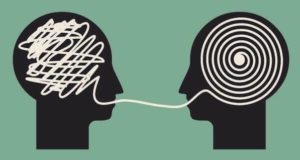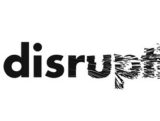A Framework for Developing Teachers Part I
- On 14-03-2019
What a group of teacher-coaches discovered as they coached…
A Framework for Developing Teachers Part I
When the Victorian Department of Education released the Framework for Improving Student Outcomes in 2015 I rejoiced – especially the initiative on “Building Leadership Teams”. This initiative was defined as:
“Effective schools build an improvement culture by developing the capabilities of their leadership team. Schools do this by using evidence-based data, implementing proven coaching and feedback techniques, and strengthening succession planning and induction of new teachers.”
Finally an Education Department understands that long term student outcomes are impacted by the presence (or not) of systemic leadership development of staff. The challenge I found was that despite the great ideas expressed, schools and school leaders had little access to HOW they could create an ecology of leadership that made a difference.
Last year I worked for 9 months with a group of teacher-coaches as they coached teachers and leaders in a wide range of schools. Over time I noticed that the teacher-coaches were facing similar challenges and for several months I kept having the thought that “It would be great if we had some framework or tool based on an individual’s needs and stage of development which would allow coaches to target their coaching more effectively”.
 Over the next few newsletters I will be unpacking some of the underlying ideas of the framework I have developed to highlight some of the things teachers and school leaders need to think about as they grow a sustainable leadership culture in their schools.
Over the next few newsletters I will be unpacking some of the underlying ideas of the framework I have developed to highlight some of the things teachers and school leaders need to think about as they grow a sustainable leadership culture in their schools.
Relationship and Trust
One of the first challenges that the teacher-coaches faced was that a number of the teachers and/or leaders they were coaching initially had quite a negative attitude to being coached. Whilst there were certain external logistical factors that had an influence on this attitude, the teacher-coaches had a job to do – empower the teachers and support them to improve their practice.
In essence the teacher-coaches were dealing with distrust – both at the individual level as well as at the school level. A traditional coaching solution would be for the coach to actively listen, to build relationship with the individual being coached, and to build trust with them over time. This is a great approach and does work but the teacher-coaches were faced with a time constraint as well as being brought in from outside the school. What the teacher-coaches were interested in was how they could move through this phase quickly to create a great coaching relationship.
This led me to distinguishing a contextual conversation that the teacher-coaches could have that could make a difference to the rate of building trust.
Mindsets and Classification
The way we think about situations and the mindset we use to interpret those situations has an enormous impact on the end result. Carol Dweck’s work around Growth and Fixed mindsets is a clear example of this. Rita Pierson’s TED talk Every Kid Needs a Champion is another. Dr Chris Sarra’s work with empowering the learning of Aboriginal and Torres Strait Islander students as part of the Stronger Smarter Institute is another. In fact the 2017 updated Visible Learning effect size research showed the extraordinary impact of beliefs and mindsets on learning.
Our mindsets and beliefs all arise from the way our brain classifies information and makes sense of the world. Andrew O’Keefe in his wonderful book Hardwired Humans – Successful Leadership Using Human Instincts pointed out that:
- “Whilst we like to think we are rational beings in the workplace we aren’t. The basis on which we make sense of our world and the way we make decisions is overwhelmingly emotional. Without emotion there is no meaning attached to words, people, places and our experiences.” (page 44)
- “Classifying is part of our survival machinery – to screen information into binary categories quickly so we can react instantly to dangerous situations. We still act this way all day, every day and the classifying is based on our first, emotional reaction” (page 60)
Deficit versus Developmental Thinking
From my reading of the literature, the classification we do is either based on a deficit approach (related to the experience of a threat – real or perceived – and is driven by our limbic parts of the brain) or a developmental approach (related to making sense of the world and is driven by our neo-cortex). The psychologist Daniel Kahneman spoke about these two classifications from the point of view of fast versus slow thinking.
Why I bring this up is that deficit classification is based on there being something wrong, something to fix, or something that is perceived as a threat. And as such we automatically tend to react negatively if we feel threatened. We can consider that the negative attitude of the individuals being coached arose because they perceived the teacher-coaches as a threat to them in some way. Given the circumstances of the coaching arrangement it was entirely natural that this could occur. However it didn’t have to continue to be this way.
A developmental classification approach is based upon making sense of the world and requires individuals and school systems to be thinking and operating from a continuum of development. For example, a student is not unable to learn maths because of X or Y reason – they are currently at a particular developmental level of knowledge, skill and thinking and we can nurture their growth by diagnosing where they currently are and using the appropriate strategies and approaches to nurture that growth. Similarly we can say exactly the same for teachers and school leaders.
Note: Seligman’s Positive Psychology, Goleman’s Emotional Intelligence, Restorative Justice Practices and especially coaching are based in the concept of developmental thinking.
Speeding up the Process of Coaching
What the teacher-coaches realised was that they could speed up the process of building trust and relationship with an individual by distinguishing the influence of deficit versus developmental thinking. By giving the teachers and school leaders an empowering evidence-based point of view from which to think from they could begin to become self-aware about what was driving their behaviour.
The teacher-coaches found that by doing this, plus creating an empowering context of being their champion, the teachers began to partner the teacher-coaches in building a great coaching relationship quicker.
As an interesting extension of this idea the teacher-coaches and I also discovered that schools can embed deficit thinking culturally because they have created systems and processes to deal with something being wrong, to be fixed or a threat. They have enculturated threat into the way the school operates. Schools can identify which systems, processes, practices and language are currently grounded in deficit thinking and then re-align the entire school to a developmental thinking approach. This would make a profound difference to the way the school operates and the learning that will occur.
You can find out more about how we can partner you in developing leadership within your school or any of our bespoke offerings by contacting Adrian Bertolini on +61 0 413 036 382 or via email: adrian@intuyuconsulting.com.au


0 Comments